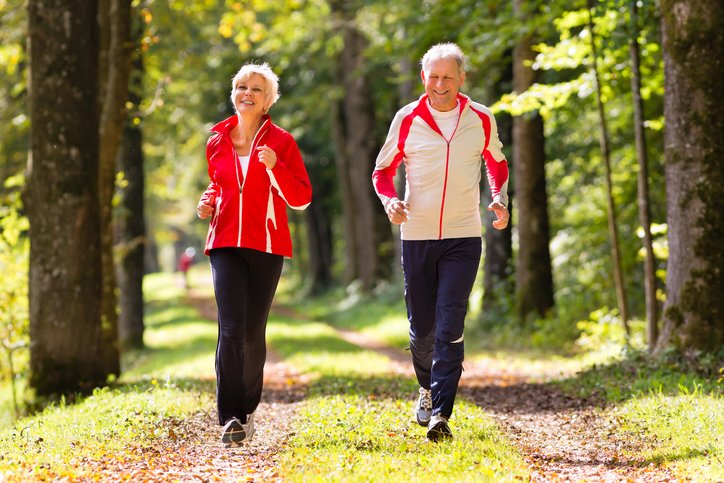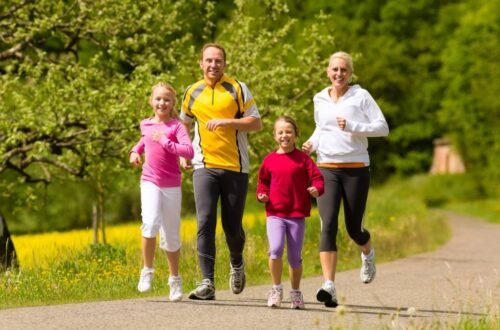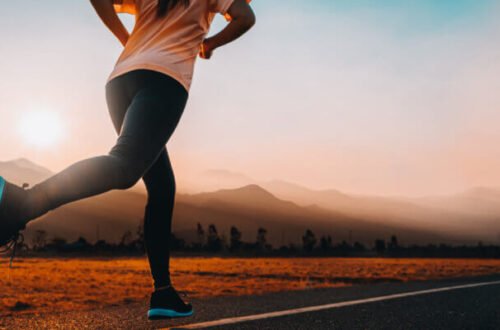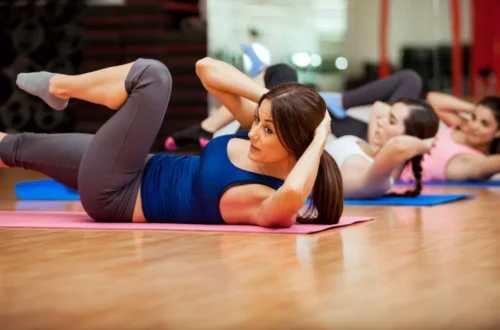Aging is inevitable, but how you age is largely in your hands. Embracing an active lifestyle today can transform your health and vitality as you grow older. From boosting your heart health to sharpening your mind, staying active is like investing in a future where you feel stronger, happier, and more engaged with life.
What Does an Active Lifestyle Really Mean?
An active lifestyle means weaving physical activity into your daily routine in a sustainable way. It’s not about running marathons (unless that’s your thing!) but about consistent movement—think walking, gardening, or dancing to your favorite song. It’s about making choices that keep your body and mind in motion.
Why Movement Matters for Aging
Movement keeps your muscles strong, your joints flexible, and your heart pumping efficiently. Research shows that regular physical activity can reduce the risk of chronic diseases like heart disease and diabetes, which become more common with age. It’s like giving your body a tune-up to run smoothly for years.
Physical vs. Sedentary Lifestyles: A Comparison
Comparing active and sedentary lifestyles reveals stark differences in aging outcomes. Active individuals often enjoy better mobility, lower disease risk, and sharper cognitive function, while sedentary habits can accelerate physical decline.
| Lifestyle | Physical Health | Mental Health | Longevity Impact |
|---|---|---|---|
| Active | Stronger muscles, better heart health | Improved mood, sharper cognition | Increased life expectancy |
| Sedentary | Muscle loss, higher disease risk | Higher stress, cognitive decline | Reduced life expectancy |
The Science Behind Activity and Aging
Science backs the claim that staying active slows the aging process. Studies show that physical activity influences everything from your cellular health to your brain function. For example, a 2013 study in The Lancet found that just 2,000 extra steps daily lowered heart disease risk by 8% in people with pre-diabetes.
How Exercise Slows Cellular Aging
Exercise impacts your body at the cellular level by protecting telomeres, the caps on your DNA that shorten with age. Regular cardio, like 30 minutes of brisk walking five days a week, has been linked to a biological age nearly nine years younger. That’s right—your cells could stay “younger” just by moving more!
Cognitive Benefits of Staying Active
Physical activity doesn’t just keep your body young; it sharpens your mind. A 2023 study from Frontiers found that regular exercise improves attention and executive functions like decision-making, especially in older adults. So, that daily walk could help you stay quick-witted into your 80s.
My Journey to an Active Lifestyle
Let me share a quick story. A few years ago, I noticed my energy dipping in my late 30s. I was no couch potato, but my “exercise” was sporadic—mostly chasing my dog around the yard. Inspired by my spry 70-year-old neighbor who biked daily, I started small: a 20-minute walk each morning. Fast forward, those walks turned into jogs, then strength training. Now, I feel stronger and more focused than I did a decade ago. It’s proof that small steps lead to big changes.
Starting Small: The Power of Consistency
You don’t need to overhaul your life overnight. Consistency beats intensity. Start with 10-minute walks, a yoga class, or even stretching while watching TV. Over time, these habits build a foundation for healthier aging.
Key Benefits of an Active Lifestyle
Staying active offers a cascade of benefits that ripple through your life. Here are the top reasons to lace up your sneakers:
- Heart Health: Regular movement lowers blood pressure and cholesterol, reducing heart disease risk.
- Mental Clarity: Exercise boosts endorphins, easing stress and improving memory.
- Bone Strength: Weight-bearing activities like walking or lifting weights prevent osteoporosis.
- Social Connection: Group activities like dance classes foster friendships, combating loneliness.
Physical Health: A Stronger, More Resilient Body
An active lifestyle builds muscle mass and bone density, which naturally decline with age. Weight-bearing exercises like hiking or resistance training signal your body to repair itself, making you more resilient. As one X user put it, “You’re not just building muscle. You’re becoming more resilient.”
Mental Health: A Happier, Sharper Mind
Exercise is a natural mood-lifter. It reduces anxiety, improves sleep, and keeps your brain sharp. A 2020 study found that physically active older adults had better cognitive trajectories, meaning they stayed mentally agile longer.
How to Build an Active Lifestyle
Ready to get moving? The good news is, you don’t need a gym membership or fancy gear. An active lifestyle is about finding activities you enjoy and making them part of your routine.
Where to Start: Simple Activities for Beginners
Start with low-impact activities that fit your life. Walking is a great entry point—accessible, free, and effective. Other options include swimming, cycling, or even gardening. The key is to pick something you’ll stick with.
Best Tools for Staying Active
Investing in a few tools can make staying active easier and more fun. Here are some top picks:
- Fitness Trackers: Devices like Fitbit or Apple Watch track steps and motivate you to move.
- Resistance Bands: Affordable and portable for home strength training.
- Walking Shoes: A good pair, like Brooks or New Balance, supports your joints.
- Apps: Try apps like MyFitnessPal or Strava for tracking progress and setting goals.
Pros and Cons of Common Activities
Every activity has its perks and challenges. Here’s a quick breakdown:
| Activity | Pros | Cons |
|---|---|---|
| Walking | Low-cost, accessible, low-impact | May feel repetitive |
| Yoga | Improves flexibility, reduces stress | Requires instruction for beginners |
| Strength Training | Builds muscle, boosts metabolism | Risk of injury if done improperly |
Overcoming Barriers to Staying Active
Let’s be real—life gets in the way. Time, motivation, or physical limitations can make staying active feel daunting. But there are ways to push past these hurdles.
Time Constraints: Fitting Movement into a Busy Life
No time? Try “exercise snacks”—short bursts of activity like a 10-minute walk during lunch. Schedule workouts like appointments. Even busy parents can sneak in squats while watching their kids play.
Physical Limitations: Adapting to Your Body
If joint pain or mobility issues hold you back, try low-impact options like swimming or chair yoga. Consult a physical therapist for tailored advice. My uncle, who has arthritis, swears by water aerobics—it’s gentle but keeps him strong.
Where to Find Resources for an Active Lifestyle
Need help getting started? Plenty of resources can guide you toward a more active life.
Local Programs and Classes
Check community centers or gyms for group classes like Zumba or tai chi. Many offer senior discounts or beginner-friendly sessions. Websites like Meetup can connect you with local fitness groups.
Online Platforms and Apps
Online platforms make staying active accessible. Try Peloton’s app for guided workouts or YouTube channels like Yoga With Adriene for free sessions. These are perfect for home-based fitness.
People Also Ask (PAA)
Here are answers to common questions about maintaining an active lifestyle, pulled from Google’s PAA section:
How does physical activity affect aging?
Physical activity slows aging by preserving muscle mass, improving heart health, and boosting cognitive function. Studies show it can reduce biological age by up to nine years.
What are the best exercises for older adults?
Low-impact exercises like walking, swimming, and yoga are ideal. They improve strength and flexibility without stressing joints. Always consult a doctor before starting.
How much exercise is needed to stay healthy as you age?
Aim for 150 minutes of moderate aerobic activity weekly, plus two strength training sessions. Even small amounts, like 20-minute walks, make a difference.
FAQ: Your Questions About Staying Active, Answered
How can I stay motivated to exercise regularly?
Set small, achievable goals and track progress with a fitness app. Join a group or enlist a workout buddy for accountability. Reward yourself with non-food treats, like new gear.
Is it too late to start exercising in my 50s or 60s?
Never! Starting at any age improves health. A 2020 study showed even late-life exercise boosts cognitive and physical function. Just start slow and consult a professional.
What if I can’t afford a gym membership?
No gym? No problem. Walk in your neighborhood, use free YouTube workouts, or try bodyweight exercises like push-ups. Local parks often have free fitness classes.
How do I know if I’m exercising safely?
Listen to your body. Avoid pain, stay hydrated, and use proper form. A trainer or physical therapist can ensure you’re moving safely, especially with injuries.
The Long-Term Payoff of Staying Active
Investing in an active lifestyle now is like saving for retirement—you’ll thank yourself later. My neighbor, the biking 70-year-old, still outpaces me on our local trails. His secret? He never stopped moving. Whether it’s a daily walk or a dance class, every step you take today builds a healthier, happier future.
Making It Sustainable: Tips for Lifelong Activity
Sustainability is key. Choose activities you love, mix them up to avoid boredom, and set realistic goals. Over time, movement becomes a habit, not a chore. Here’s to aging with strength, grace, and a little bit of swagger!





